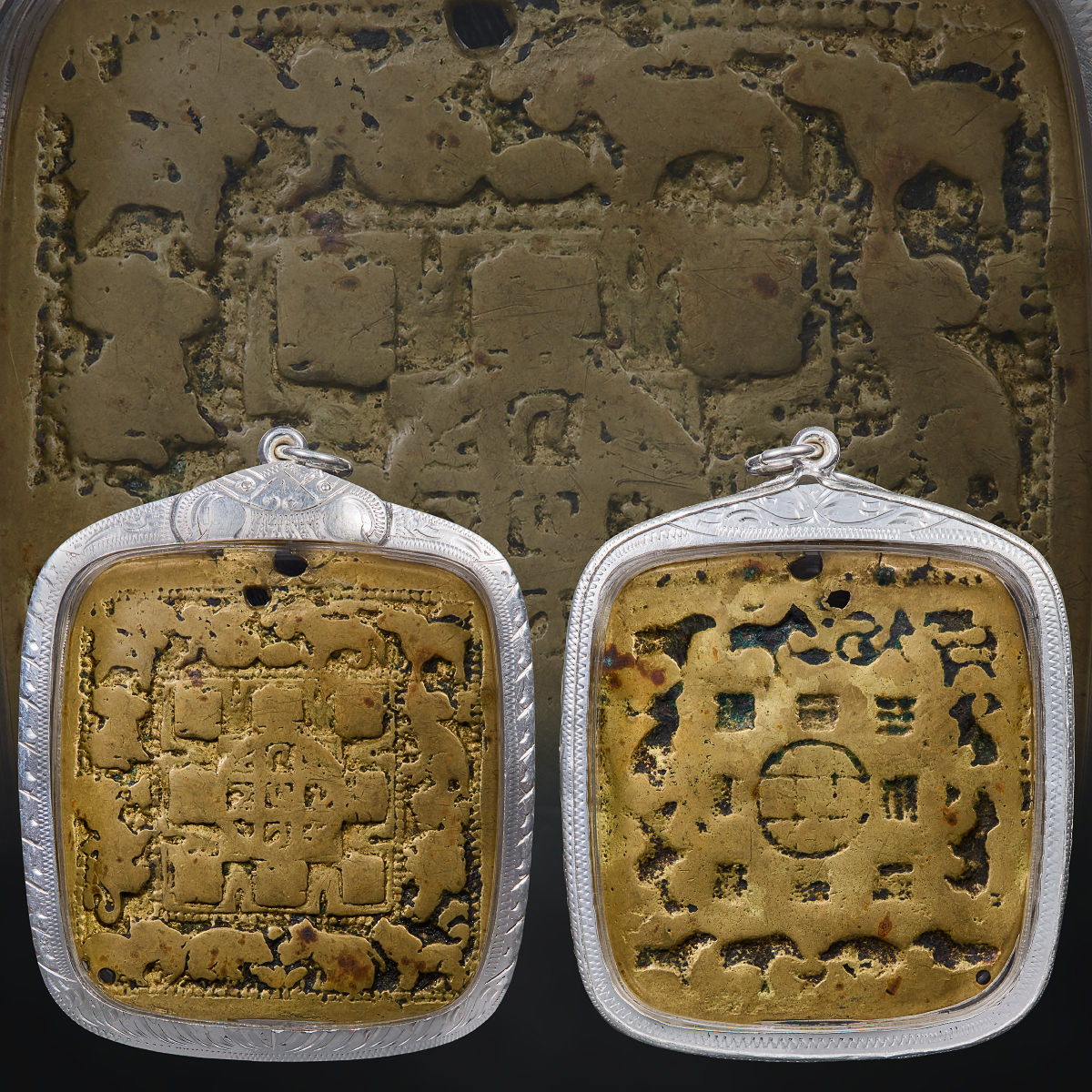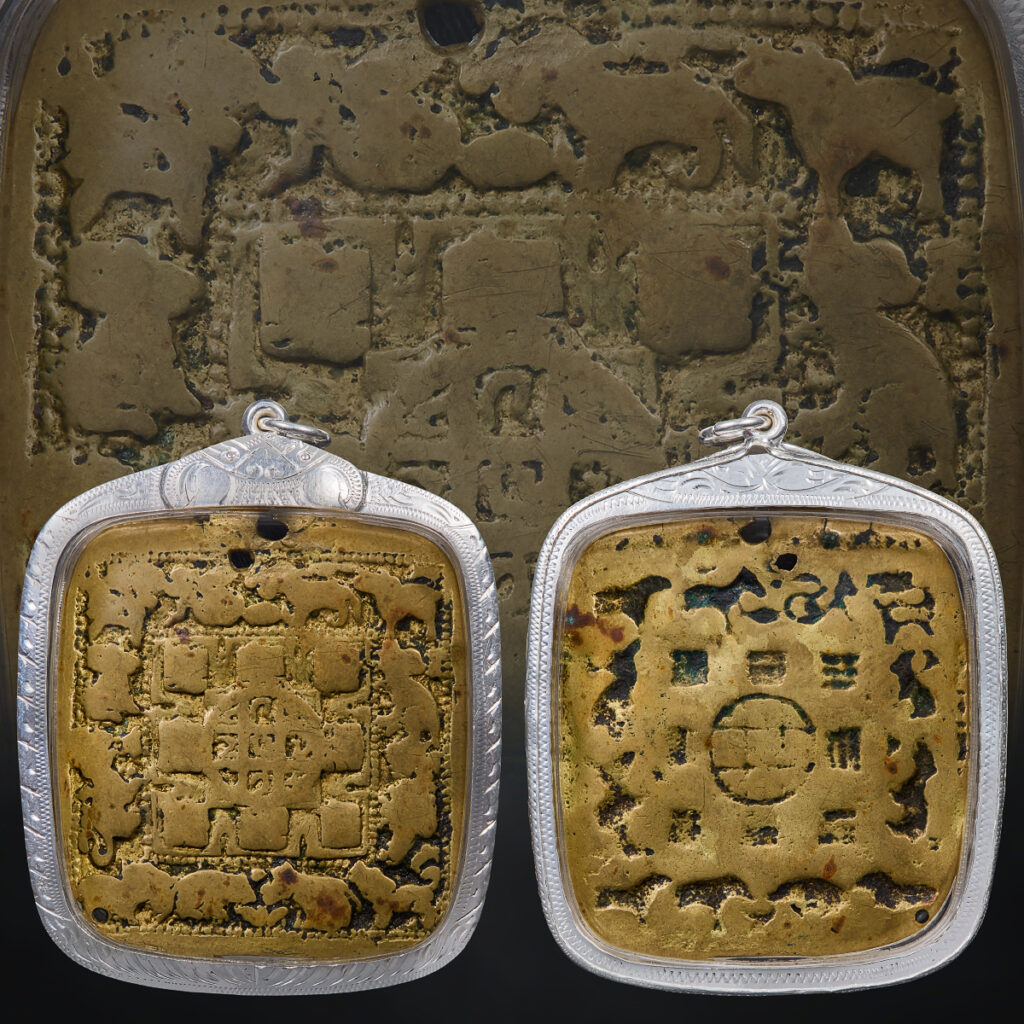
06 Mar Nine Palaces and Eight Trigrams Talisman
Info Sharing
The Nine Palaces and Eight Trigrams Talisman (Jiugong Bagua Pai) is a sacred protective amulet in Tibetan Buddhism, combining elements of Chinese, Indian, and Tibetan spiritual traditions.
It is believed to ward off negative influences, ensure good fortune, and provide spiritual protection.
Origin and Symbolism
The talisman is derived from the Manjushri Nine Palaces Eight Trigrams Diagram, attributed to Padmasambhava, the founder of Tibetan Vajrayana Buddhism.
It integrates Chinese Bagua (Eight Trigrams), Twelve Zodiac Signs, and Tibetan protective mantras.
The outer ring features the 12 Chinese zodiac animals, representing time cycles.
The middle ring consists of the Post-Heaven Bagua, commonly used in geomancy and protection.
The inner ring follows the Lo Shu Magic Square, a fundamental concept in Chinese metaphysics.
The four outer guardians are fierce deities protecting against evil and misfortune.
Uses and Benefits
Personal Protection – Often worn on the waist, as a pendant, or carried as an amulet.
Home Protection – Hung at the entrance of a home or office to block negative energy.
Feng Shui Enhancement – Placed in homes or businesses for prosperity, health, and harmony.
Obstacle Removal – Helps neutralize bad luck from astrological conflicts (e.g., Tai Sui).
Spiritual Growth – Believed to enhance wisdom, decision-making, and clarity.
Common Variations
Shapes: Round (most popular) and square.
Design Styles: Ziba Zha (four-faced deity), Lotus design, Beast-head styles.
The Nine Palaces and Eight Trigrams Talisman is highly regarded in Tibetan Buddhism, Feng Shui, and spiritual practices for its protective and harmonizing properties.
The value of a 九宫八卦牌 (Nine Palaces & Eight Trigrams Talisman) varies greatly depending on several factors, including its age, craftsmanship, and materials used.
Age & Price Range
New 九宫八卦牌 from temples or mass-produced models can be quite affordable, often starting as low as $20 USD.
However, older and more historically significant pieces, especially those blessed by renowned masters or made using traditional methods, can reach prices of $10,000 USD and beyond.
Some rare antiques or talismans linked to famous Tibetan masters can fetch even higher prices among collectors and spiritual practitioners.
Workmanship & Material Used
The quality of 九宫八卦牌 varies based on how and where it is made. Some key differences include:
Traditional Handcrafted Pieces
Highly skilled artisans hand-carve or cast these amulets using sacred techniques, often passed down through generations.
Some craftsmen melt old metals, including ancient temple artifacts or meteorites (天铁, “Sky Metal”), to create spiritually powerful talismans.
The intricate detailing and time-intensive process make these pieces highly valued, with strong spiritual significance.
Factory-Made Versions
Some 九宫八卦牌 are mass-produced using simple brass or mixed alloys, making them more affordable but often lacking the same level of craftsmanship and spiritual potency.
These versions are common in souvenir shops and general religious goods stores.
Special Materials & Sacred Alloys
Tibetan Copper (利玛铜): A traditional alloy commonly used for ritual objects.
Silver & Gold: Some high-end versions incorporate precious metals, adding both monetary and spiritual value.
Meteorite & Temple Relic Metals: These rare and powerful materials are believed to enhance the talisman’s mystical properties.
The combination of these factors—age, craftsmanship, and material—determines the 九宫八卦牌’s price and significance. Whether seeking a simple protective talisman or a high-value collector’s item, understanding these elements helps in choosing the right one.







No Comments